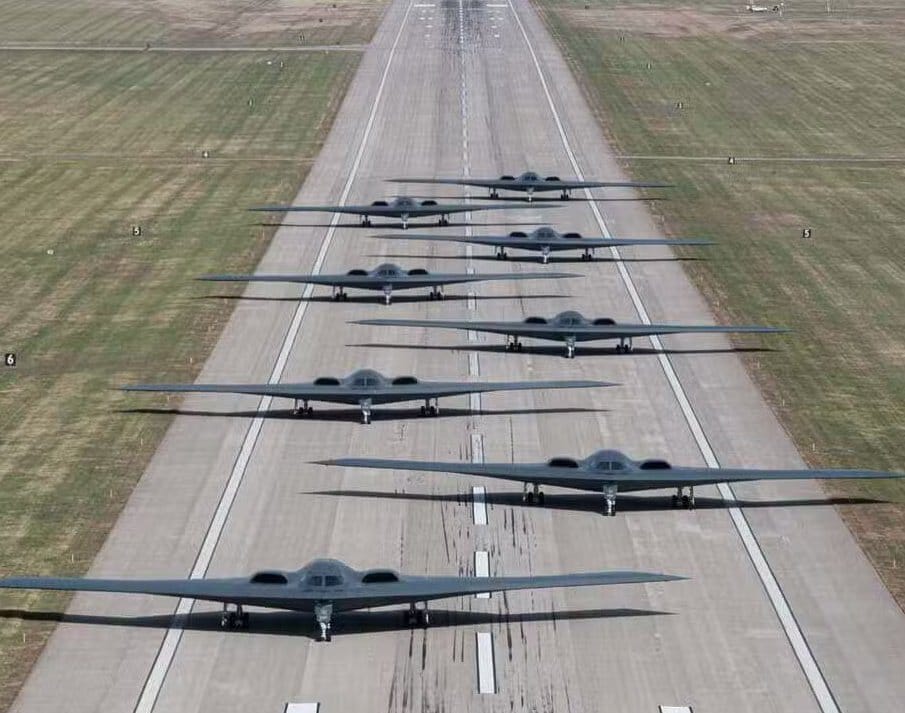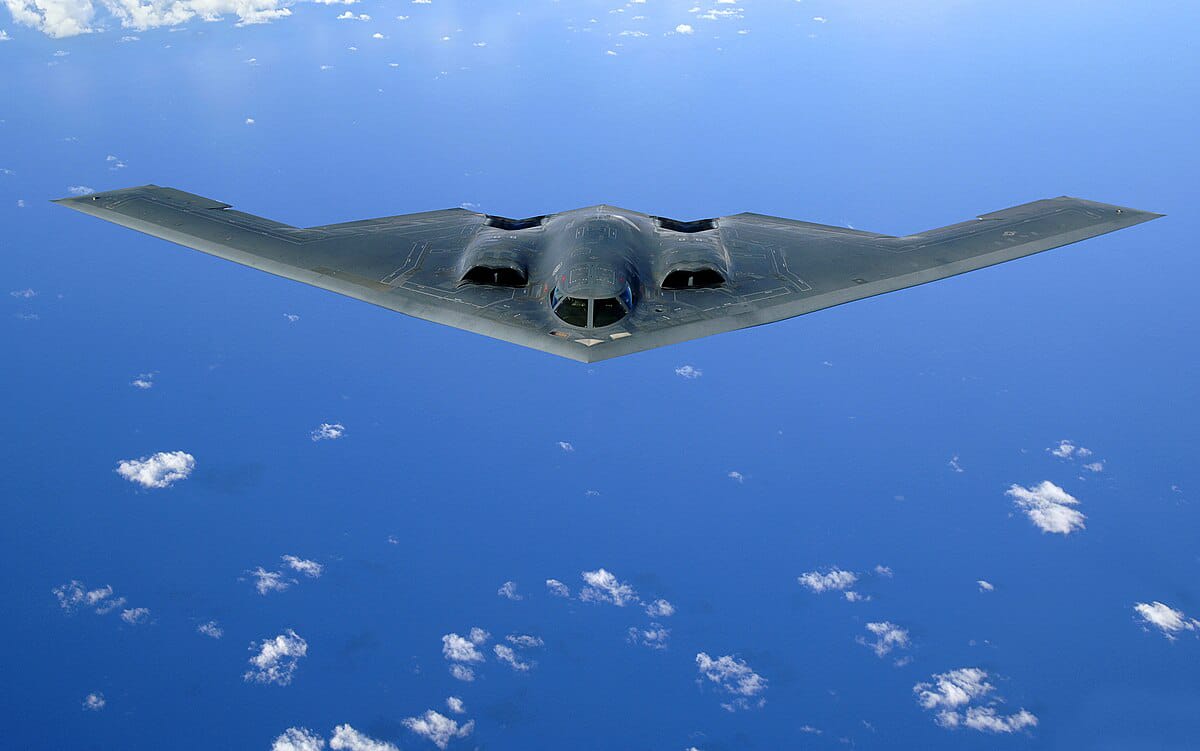The United States has positioned a formidable group of B-2 Spirit stealth bombers at Diego Garcia, a small but strategically vital island in the Indian Ocean. Recent satellite imagery and reports from aviation trackers indicate that at least four and possibly as many as seven of these advanced aircraft are now stationed there, accompanied by a robust support fleet: three C-17 cargo planes and between 11 and 18 KC-135 refueling tankers. This isn’t a routine deployment; it’s a significant move that’s sparking questions about U.S. intentions. Is this a prelude to action against Iran’s nuclear program, or a ramp-up of strikes on Yemen’s Houthi rebels? With President Donald Trump at the helm known for keeping everyone guessing the answer’s far from clear.
A Buildup at Diego Garcia

The first hints emerged late last week when radio transmissions from B-2 crews, using call signs like “Pitch 11” and “Pitch 14,” were picked up over Australian airspace, suggesting a coordinated push toward Diego Garcia. By March 29, satellite images from Planet Labs confirmed the presence of at least four B-2s at Camp Thunder Cove, the island’s U.S. military outpost, with speculation of additional arrivals. The sheer number of support aircraft points to a sustained operation base parking slots are reportedly reserved through May 1. This isn’t a quick stopover; it’s a statement.
The timing aligns with Trump’s latest diplomatic gambit. Earlier this month, he sent a letter via the UAE to Iran’s Supreme Leader Ali Khamenei, giving Tehran two months to negotiate a new nuclear deal or face “severe repercussions.” On Truth Social, he’s been vocal, tying Iran directly to Houthi attacks in the Red Sea: “Every missile launched by the Houthis is now considered a direct act of Iran’s leadership.” That’s a bold line in the sand. With B-2s now in position capable of delivering massive bunker-busting bombs some see this as a warning shot aimed at Iran’s fortified nuclear sites, like the Fordow enrichment facility.
Yet the Houthis remain a pressing concern. For over a year, they’ve disrupted shipping in the Red Sea and targeted Israel with missiles, all with Iran’s support. U.S. airstrikes including a B-2 mission last October that hit Houthi weapons caches haven’t fully curbed their aggression. Trump’s promised “tremendous consequences” if they persist, and this deployment could signal a more forceful campaign to neutralize them. The B-2’s stealth might be overkill for Yemen’s defenses, but its firepower fits Trump’s taste for decisive action.
Trump’s Wild Card
Here’s where it gets complicated: Trump’s back in office, and his track record pulling out of the Iran deal in 2018, ordering the Soleimani strike in 2020 shows he’s not afraid to shake things up. He’s dangling a carrot and a stick, but his next move is anyone’s guess. Earlier this month, a leaked chat involving Defense Secretary Pete Hegseth accidentally shared with a journalist hinted at Houthi strike plans, only for the Pentagon to downplay it. That kind of unpredictability is pure Trump, leaving analysts debating whether he’s bluffing to pressure Iran or gearing up for a fight.
If Iran rejects his deadline and early indications suggest defiance the B-2s could be poised to hit its nuclear infrastructure. Their 30,000-pound bombs are built for targets like Iran’s underground complexes. Alternatively, this could be about the Houthis: a heavier, sustained campaign to crush their operations and weaken Iran’s regional leverage indirectly. Trump’s flair for drama keeps both scenarios in play.
The B-2 Spirit: A Brief Rundown
The B-2 Spirit is no ordinary plane. This bat-winged stealth bomber, first flown in 1989, was designed to penetrate Soviet defenses during the Cold War, carrying nuclear or conventional payloads. At roughly $2 billion each (adjusted for today), the Air Force planned for 132 but settled on 21. After a 2008 crash and a 2022 retirement, 19 remain active. With a 6,000 mile range extendable with refueling and a 40,000-pound payload, it’s a rare beast. These doomsday weapons are the best in the world. Seeing four to seven in one place potentially a third of the fleet is a big deal. From Kosovo to Yemen, it’s proven its worth, but massing them like this is unusual.
Why Diego Garcia Matters
Its location 3,300 miles from Iran, 2,200 from Yemen puts the Middle East in reach while keeping it safe from counterattacks. A base since the Cold War, it’s hosted bombers for conflicts from Iraq to Afghanistan. Its isolation avoids the diplomatic headaches of bases in allied nations like Qatar. For a mission needing secrecy and range, it’s ideal.
What’s Next?
The pieces are in place, but the puzzle’s incomplete. This could be a high-stakes play against Iran a loaded threat to enforce Trump’s deadline, with strikes on nuclear sites if talks fail. Or it might be a Houthi-focused escalation, aiming to break their campaign and send Iran a message without direct confrontation. The B-2s’ stealth suits Iran’s defenses; their payload fits Yemen’s bunkers. The tankers suggest long missions either way.
The Air Force isn’t talking Global Strike Command only confirmed the deployment, sidestepping specifics. Experts are divided: some see an Iran signal, others a Houthi crackdown. Only time and Trump will tell.






One thought on “B-2 Bombers at Diego Garcia: Is Iran the Target ?”
Comments are closed.